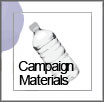
Wind and rain carry litter into the water supply, where toxic chemicals from products such as plastic containers and cigarettes threaten water quality and aquatic life forms.
Litter can harm animals. They can get caught in plastic six-pack rings or choke on virtually anything not properly contained in a trash receptacle, such as gum or cigarette butts.
Approximate Decomposition Time of Common Litter:
Glass bottle - approx. one million years
Plastic 6-pack cover - 450 years
Plastic foam cup - 200-500 years
Aluminum can - 200-500 years
Rubber boot sole - 50-80 years
Leather - up to 50 years
Nylon fabric - 30-40 years
Plastic film container - 20-30 years
Painted wooden stake - 13 years
Plastic bag - 10-20 years
Plastic coated paper - 5 years
Wool clothing - 1-5 years
Cigarette butt - 1-5 years
Cotton rag - 1-5 months
Orange/banana peel - 2-5 weeks
The Georgia Department of Transportation picks up more than two million bags of trash along the interstates each year. If you laid those bags end-to-end, they would stretch more than 1000 miles. And California is larger than Georgia. Imagine how much more we collect!
The average person generates 4+ lbs. of trash per day.
The most commonly found items during roadside litter clean ups are cigarette butts, fast food wrappers and aluminum cans.
Littering is against the law. Anyone caught littering can be ordered to pay a fine. People who litter can also be ordered to clean up the littered area.
Adopt-a-Highway volunteers pick up approximately 26,000 tons of litter each year.
During a one-time sweep of Interstate 35W in Minneapolis, Adopt-a-Highway volunteers picked up 192 tons of trash in one day. The quantity filled 16 Mn/DOT tandem trucks and represented approximately 6,000 filled trash bags.
Researchers calculate that 55% of all littering is done intentionally by people who drop or discard products.
45% of roadside litter occurs unintentionally when trash blows out of uncovered trucks or falls off of unsecured loads.
Food and beverage packaging constitutes 51% of roadside litter.
Young people litter more than older people, men litter more than women, people living in rural areas litter more than urban residents, and people who are alone litter more than people in groups.
Experts estimate that approximately 80% of all littering is done by males.
Unofficial Citation:
Adopt-a-Highway (MN Department of Transportation)
Litter. It costs you.
Keep California Beautiful







